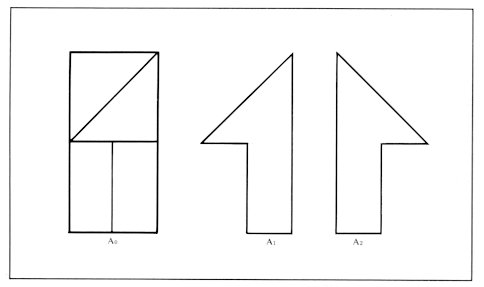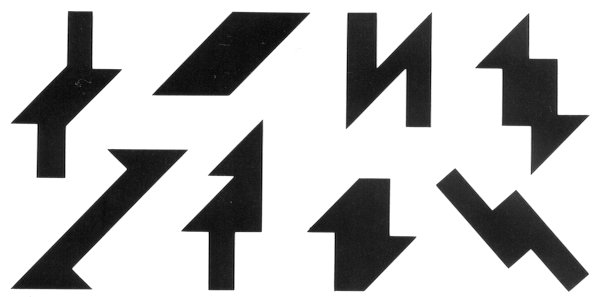|
2-- Multiplying
compositions using a unit
Since the Industrial Revolution the idea of "standardization" in production has been strongly promoted by technological innovation. It is splendid that the parts of one machine can also be available for another machine. This idea, is not only a result but also a starting point for the pursuit of rationality and is being researched more deeply as a method of producing various works which require rationality. As a result, "the unit method of modeling" has been adopted in various fields from printing to furniture and industrial design to architecture. I am not concerned here with the practicality of the unit method of modeling. In other words, I would like to discuss this method purely from the standpoint of KOHSEI (Basic Art & Design). Let us consider how to employ the unit method of modeling as a plane KOHSEI (Basic Art & Design) of the centrifugal KOHSEI (Basic Art & Design). In composing by units, you will find that the variations in form are infinite by only combining with the same units (or a few different kinds of units), and it is great fun to see an unexpected shape. Then, how to decide a shape as a unit?
Selection of a unit......(1)
And, what ways do you have to compose units? Study of KOHSEI (Basic Art & Design) methods......(2) -These two are the bases of the KOHSEI (Basic Art & Design). The unit method of modeling in the plane KOHSEI (Basic
Art & Design) results in such things as a rich variation of patterns
that can be created from the same shapes. The method also researches what
type of collective form you get from your manipulation.
Figure 148: Unit A1, A2 and how to make them.
|
||||

